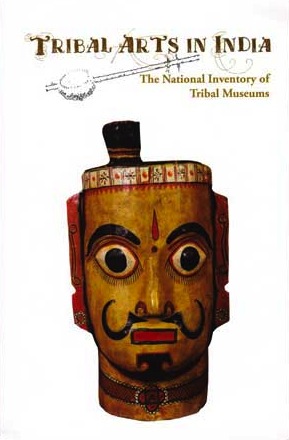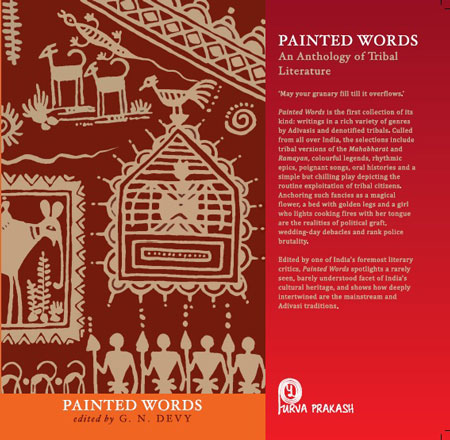“National development and the development of tribal communities are linked to each other.” – Droupadi Murmu
Speeches by the 15th President of India >>
Set up in 1962, the Institute carries out studies on the life, culture and economy of the tribal people of Gujarat . It has done extensive documentation and created a data bank on the living conditions of various tribes. The Institute has also been the coordinating centre for anthropological studies. It has conducted training programmes for state government officials, extension workers, educators, youth leaders and members of voluntary organizations tasked with working in tribal areas. The Institute has a tribal museum.
Started since the foundation of the Vidyapith in 1920, the Central Library has grown over the years to become one of the richest repositories in Gujarat […]
Source: GVP :: State Resource Centre for Adult Education
Address: http://www.gujaratvidyapith.org/Tribal%20Research%20and%20Training%20Institute.htm
Date Visited: Sat Feb 20 2016 16:00:14 GMT+0100 (CET)
Gujarat Vidyapith was founded by Mahatma Gandhi on 18th October, 1920. It has been deemed university since 1963 [University established under Section 3 of the UGC Act, 1956; vide Notification No. F.10-20/62-U2 of the Govt. of India].
Source: Welcome to Gujarat Vidyapith – Ahmedabad
Address: http://gujaratvidyapith.org/
Date Visited: Sat Feb 20 2016 15:55:35 GMT+0100 (CET)
“The slogan today is no longer merely ‘Asia for the Asians’ or ‘Africa for the Africans’ but the unity of all the oppressed races of the earth.” – Mahatma Gandhi addressing two stalwarts of the struggle struggle in South Africa against apartheid), quoted by Vinay Lal in The Solidarity of Oppressed Peoples: A Tribute to E S Reddy, Anti-Apartheid Activist >>
Kapil Dave, Indian Express, Gandhinagar, Sun Apr 08 2012
Ashram Shalas, residential schools for tribals in rural areas promoted by Mahatma Gandhi to spread education and spirit of freedom in the rural and tribal areas of the state, now seem to be low on the government’s priority. […]
The state Tribal Development Department runs Ashram Shalas in 14 tribal districts of Gujarat to prevent drop-outs among the tribal children.
At present, there are 452 primary Ashram Shalas, 87 Uttar Buniyadi schools (secondary) and 10 Uchhatar Buniyadi (higher secondary) Ashram Shalas in Gujarat. In all, 549 Ashram Shalas have 69,995 students at present.
Ashram Shalas were started in Gujarat with a Rashtriya Shala in 1920.
They soon started promoting Nai Talim initiated by the Mahatma Gandhi along with Gujarat Vidyapith and other educational institutions with an aim of spreading educational in rural and tribal areas.
After the Independence, the concept of Ashram Shalas was promoted so that students from remote hilly and tribal areas also got better education.
The Ashram Shalas do not have extra co-curricula activities like sports, youth festivals, science fairs etc., and there is no coordination between district panchyat office and education officer.
Teachers of the Ashram Shalas don’t get benefits like provident fund and pension, the study said.
Source: Gandhi’s tribal schools dying: Study – Indian Express
Address : http://www.indianexpress.com/news/gandhis-tribal-schools-dying-study/934042/0
Date Visited: Sun May 20 2012 11:22:55 GMT+0200 (CEST)

Read or download titles for free (eBooks & Magazine) >>
Tips for using interactive maps
Toggle to normal view (from reader view) should the interactive map not be displayed by your tablet, smartphone or pc browser
For details and hyperlinks click on the rectangular button (left on the map’s header)
Scroll and click on one of the markers for information of special interest
Explore India’s tribal cultural heritage with the help of another interactive map >>
See also
Adverse inclusion | Casteism | Rural poverty
Demographic Status of Scheduled Tribe Population of India (Census figures 2011)
Fact checking | Figures, census and other statistics
Human Rights Commission (posts) | www.nhrc.nic.in (Government of India)
Search tips | Names of tribal communities, regions and states of India
“What is the Forest Rights Act about?” – Campaign for Survival and Dignity
“Who are Scheduled Tribes?” – Government of India (National Commission for Scheduled Tribes, NCST)

Tribal Literature by G.N. Devy >>
Free eBooks & Magazine: Adivasi literature and languages >>
“India, a union of states, is a Sovereign, Secular, Democratic Republic with a Parliamentary system of Government. The President is the constitutional head of Executive of the Union. In the states, the Governor, as the representative of the President, is the head of Executive. The system of government in states closely resembles that of the Union. There are 28 states and 8 Union territories in the country. Union Territories are administered by the President through an Administrator appointed by him/her. From the largest to the smallest, each State/UT of India has a unique demography, history and culture, dress, festivals, language etc. This section introduces you to the various States/UTs in the Country and urges you to explore their magnificent uniqueness…” – KnowIndia (Government), States and Union Territories (Visited: 2 September 2023)
Learn more about India’s 28 States and 8 Union Territories – From Andhra Pradesh to West Bengal | Nutrition >>